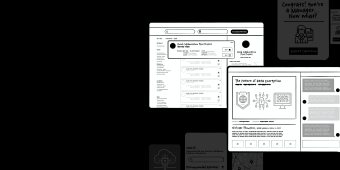React Native is a popular framework for building mobile applications that allows developers to create apps for both iOS and Android with a single codebase. It was first introduced by Facebook in 2015 and has since become one of the most widely used frameworks for building mobile apps. Thanks to its cross-platform compatibility, React Native can significantly reduce the time and effort required for app development.
One of the main benefits of React Native is that it allows developers to write code in JavaScript, a popular programming language that is used extensively in web development due to its integration into browsers. Web developers who are new to mobile development can use React Native without having to learn any of the languages traditionally employed for native mobile development: Swift and Objective-C on iOS, or Kotlin and Java on Android.
Additionally, React Native is based on the React framework, which is widely used on the Web, so the basic paradigms of React Native—e.g., how to lay out a user interface, or how to retrieve and store data locally—will already be familiar to many web engineers. Many third-party libraries and tools can even be reused across React applications on the Web and React Native, further reducing the learning curve for building mobile applications.
Once compiled for release, React Native applications are true native apps, and will run as smoothly and reliably as those written in native code. Some earlier cross-platform mobile frameworks, such as Apache Cordova, attempted to simply wrap a small web application in the shell of a mobile app and present it to the user as though it were native code, but due to inherent limitations of mobile browsers, the experience was noticeably slow and frustrating for users. React Native actually translates its JavaScript components into true native user interfaces on both iOS and Android, so the user experience has true parity with natively written apps.
With React Native, effectively all of the code—including UI components—can be shared across both iOS and Android platforms, which means that developers don't have to write separate code for each platform. The ability to reuse components can also result in faster app development, which can be crucial in today's fast-paced digital landscape.
Finally, React Native is an open-source framework, which means that it has a large and active community of developers who are constantly contributing to the platform and its broader ecosystem of support libraries. This community-driven development approach means that the framework is continually evolving and improving, with regular updates and bug fixes being released. This can help ensure that apps built using React Native remain up to date and can take advantage of the latest features and capabilities. Overall, React Native is an excellent framework for building mobile applications that can help reduce code complexity, improve speed to market, and provide an efficient and streamlined development process.





